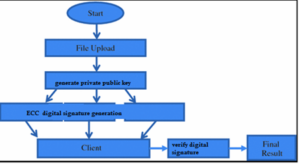Abstract:
Education institutions use new technologies to improve the quality of education but most of the applications which are used in colleges are related to service and development there are web applications that are helping students to take online training and tests. There are very few methods that can help teachers to know about student’s performance. Considering this problem machine learning techniques are used to predict students’ marks based on previous marks and predict results. Linear regression models are used to predict student performance and predict the next subject’s marks.
Problem statement:
Education institutions use web applications for training students and checking performance based on marks but there are no specific steps followed for predicting students’ performance and taking measures to improve performance.
Objective:
Design a machine learning model for the prediction of students’ marks and take measures to improve student performance. The linear regression algorithm is used to train the model and prediction.
Existing system:
Researchers had done work on the automation of grading techniques in which previous marks were used to give grades to students.
Algorithms like association rule mining and apriori algorithms are used for classifying students’ marks.
Disadvantages:
Existing methods mostly work based on marks obtained from exams.
Algorithms are used for classifying students based on marks.
Proposed system:
The dataset of other subject marks is taken as input and the data set is processed with labels and features then test split is performed on the dataset and then the machine learning model is applied to the dataset then the prediction is performed.
Advantages:
Before the final marks of all subjects are evaluated prediction can be performed.
Using a machine learning process automation of marks prediction can be done.
SOFTWARE REQUIREMENTS:
- Operating system: Windows XP/7/10
- Coding Language: python
- Development environment: anaconda, Jupiter
- Dataset: students mark the dataset
- IDE: Jupiter notebook

